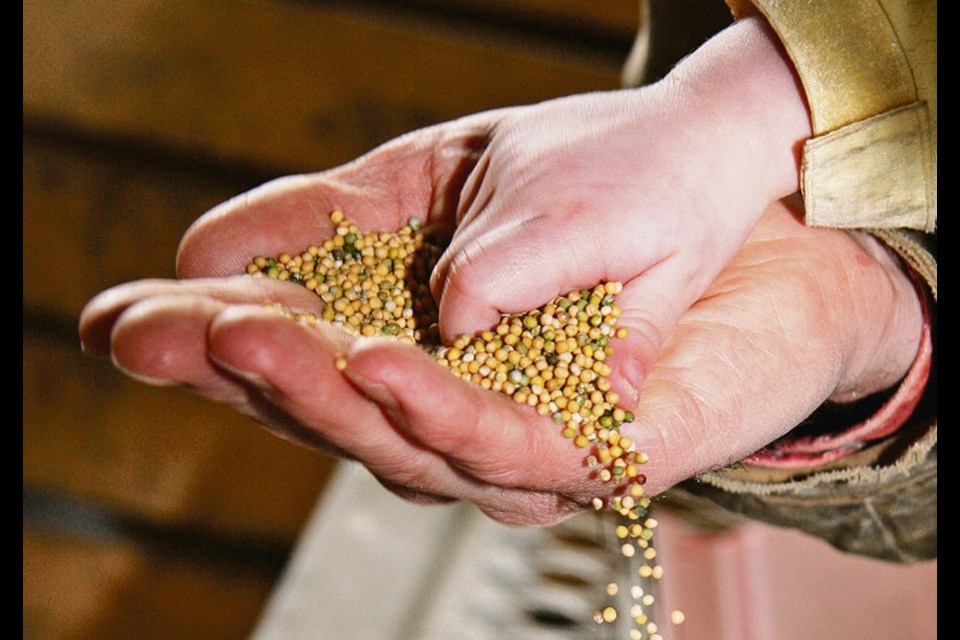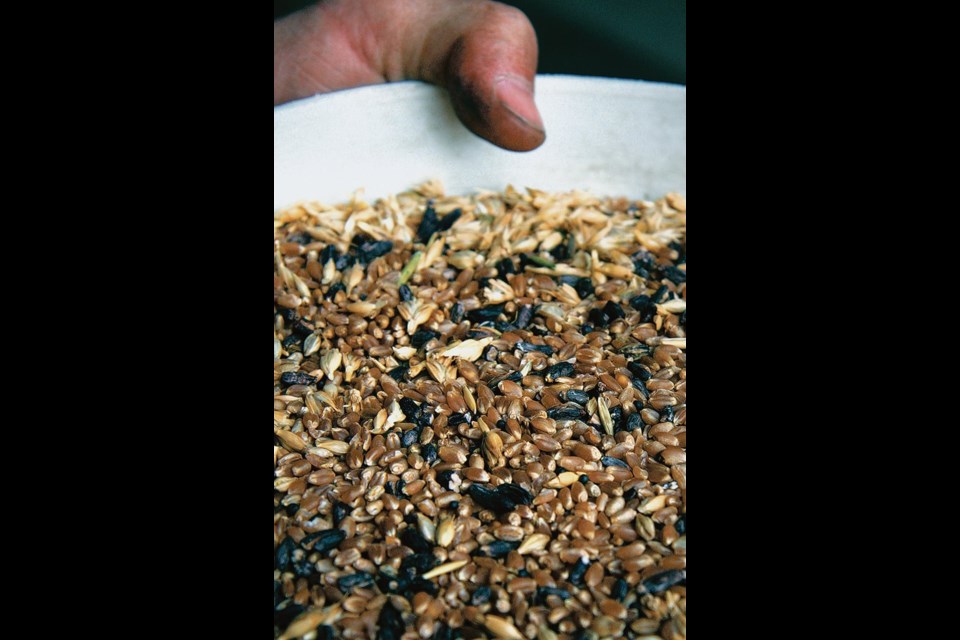AVONLEA, Sask. — An aging seed cleaning plant forced the Watson family to choose between getting out of the seed business or looking at building a facility.
The family have been seed growers since the 1960s but investing in a new seed plant was a big decision, said Mark Watson of Watson Seeds.
“It was getting to the point that if we wanted to stay in the seed business we needed to build a new cleaning plant or get out. It has been a pretty key part of our farm for a long time,” said Watson, of Avonlea, Sask.
It took two years of planning before work began on the new building. They worked with seed equipment sales staff, toured other plants and spent hours discussing what they wanted from the new facility. Once they settled on an equipment company, they were put in touch with a general contractor who had built other seed cleaning facilities.
“We went through a lot of the planning so we were not making it up as we went along.”
Once plans were finalized, they needed to plan when to tear down the existing seed plant. It needed to be late enough to finish the year’s cleaning, yet early enough to get the new one built in time to clean the next year’s crop.
“We made sure everything was lined up and ready to go and not searching to find some place to custom clean.”
They broke ground in April as soon as the snow melted. The plan was to be operating in early December, but because of some delays they started cleaning in February.
It has been four years since they started cleaning in the new plant and are pleased with the results. The cleaning capacity has doubled with room in the new building to twin the cleaning line or add different equipment in the future. They can now also clean pulse crops.
Since building the plant they have cleaned plenty of chickpeas for other producers.
The new colour sorter has also been put to use to clean barley and wheat from oats.
“We are much more efficient.”
After their seed cleaning plant burned down in 2015, the Greenshields family had to decide if they were going to continue in the seed cleaning business.
“If we were going to continue in the seed business we needed to build one,” said Tom Greenshields of Greenshields Seeds Farm in Semans SK.
“If you are going to grow pedigreed seed you need your own seed cleaning plant, cost-wise.”
The old plant, built in 1958 on the CN line, was originally a seed cleaning co-op.
The family bought the plant in 1982 and operated it until it burned in 2015.
The new plant is being built on their home farm.
The family began construction about one year ago and are building most of it themselves between seeding, harvest and other farm activities.
“A contractor would have been nice, but it was just cost. We already knew it was going to be quite an investment,” said Greenshields, who estimates hiring a contractor would have doubled the cost, but the plant would have been operating sooner.
“It will cost substantially more than our old one did. It is expensive to build one nowadays,” said Greenshields.
The new facility is “pretty standard” with a colour sorter, inside legs, more electronics, sensors, more capacity and room for future expansion, he said.
Nick Petruic chose a hybrid construction model for his new Petruic Seed Company seed cleaning plant, hiring out some jobs and doing others himself.
A contractor was hired to put up the building, do the cement work and frame the office, but the family did the interior drywalling and other interior jobs they could handle. A contractor was hired to assemble the large equipment and put it in place.
While the old plant, rebuilt from the old Hearne, Sask., elevator, was still functioning, Petruic wanted to improve the flow of the plant. Built in 1979, it was designed for smaller trucks in a yard that was built for smaller equipment.
“As our cleaning was refined we added pieces of machinery into that older one. It got to the point where we had no more room and had to decide if we were going to start brand new or add on,” said Petruic of Avonlea SK.
The new plant, finished in January 2020, was built south of the main yard to allow for future expansion and allow large trucks and grain to move easily in and out of the yard.
“Super Bs, they could fit in the yard but it was not ideal. We tried to put it in a spot with room for expansion. We didn’t want to get tight again too soon.”
One of the unique features of the plant was the installation of an easy dump leg to move the grain and pulses out of the plant as gently as possible.
Petruic said their seed plant is a lot like Disney World; it is never really done. Just like Disney, there will always be construction, additions, fixes and changes.
One change he would make is to have the ability to move grain directly to the colour sorter without having to go through the other equipment before it gets there.
Skyler Anderson doesn’t know if he would recommend building a seed cleaning plant in shipping containers, but it was what worked for him six years ago.
It all started with fusarium in their crop in 2016. The Anderson’s Starquest Farms bought a colour sorter to clean out the fusarium-infected grain and wanted an inexpensive building to house the new colour sorter.
Using six containers placed two wide and three high, they crammed the cleaning equipment into the temporary facility and got to work.
“At the time it was a fraction of the cost of the building and we were crazy enough to try something,” said Anderson of Starquest Farms in Hazlet SK.
“We were able to do it cheap enough that we paid for the colour sorter in the first year.”
The containers originally held a colour sorter, air screen, and length grader with legs poking out the roof of the containers to the outside bins. A year later the family became pedigreed seed growers and a gravity table was added.
“The idea was temporary for a few years, but then we started growing seed and it evolved from there.”
Since then, the outside bins have been moved onto concrete pads and some concrete footings poured inside containers for the gravity table.
“I wouldn’t do it again. There are some ongoing challenges. It was challenging building it and cramming everything into a small space. I think we did pretty good for what we had.”





